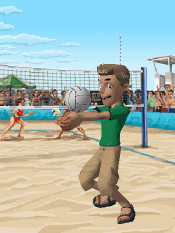Oh My Stars!
We just started my favorite unit each year, Astronomy! We're blessed to have the opportunity to use the STARLAB portable planetarium. I usually reserve it for two weeks to allow us to get into some depth of the locations of certain stars and constellations.
Every schoolyear the content of the unit seems to grow. Mainly the material that we learn inside of the planetarium grows bit by bit. I now can show them the sixteen brightest stars in the Northern Hemisphere, and how to find them, and when. (Here's a link for the 12 brightest)
We also go into the myths behind the constellations. The STARLAB has different cylinders that show different things. The students sit in a circle along the wall and the projector is set up in the middle.
To begin I concentrate on the basic star field. I can set the latitude to where we're located, and the time of year so that they can see where the stars will be at a certain time of day on the current date. One of the things that I like about Astronomy is that I seem to learn something new just about every week. When I began using the STARLAB I didn't really know all that much compared to what I know now, and I continue to try to add more all the time.

One of the first things I emphasize is that living where we do, the winter/spring is one of the best times to see many constellations. I really enjoy the enthusiasm and excitement Astronomy generates in my students. They eat it up like a good piece of pie!
I would have to say that probably my favorite constellation is the easy to find Orion. I use this constellation to show them how to find nearly 10 more.
From there I change cylinders, and show them one that has the stars of constellations connected. They can then see the shapes, and get an idea of what people were picturing when they named them. We talk about what they are supposed to look like, and the constellations around them. Some of the constellations that we talk about are: Orion, Canis Major, Canis Minor, Gemini, Casseopeia, Taurus, Auriga, Ursa Major, Ursa Minor, Bootes, Lyra, Cygnus, Aquila, and Leo.
We also look at some of the Native American constellations, and talk about how similar many are to the Greek constellations, even though they were imagined, or developed long, long ago.
Outside of the STARLAB planetarium we study the planets and other space phenomenon. I'm amazed at how much we've learned about our own Solar System in the past few years.
Did you know that in 1995 we believe that Jupiter had 16 moons. As of today, we've discovered 63 moons, and there is a great chance there are more.
Some other tidbits of info:
- Venus is the only planet that rotates in an opposite direction of the other planets.
- Uranus has an inclination of nearly 90 degrees, so it's nearly on its side
- Saturn isn't the only planet with rings- Jupiter, Neptune and Uranus also have them.
- Mars has the largest volcano in the solar system, Olympus Mons.
- Jupiter's moon Ganymede is larger than the planet Mercury.
And a great Blog dedicated to the subject: Tom's Astronomy Blog
There is so much more out there to learn. I could go on and on!













